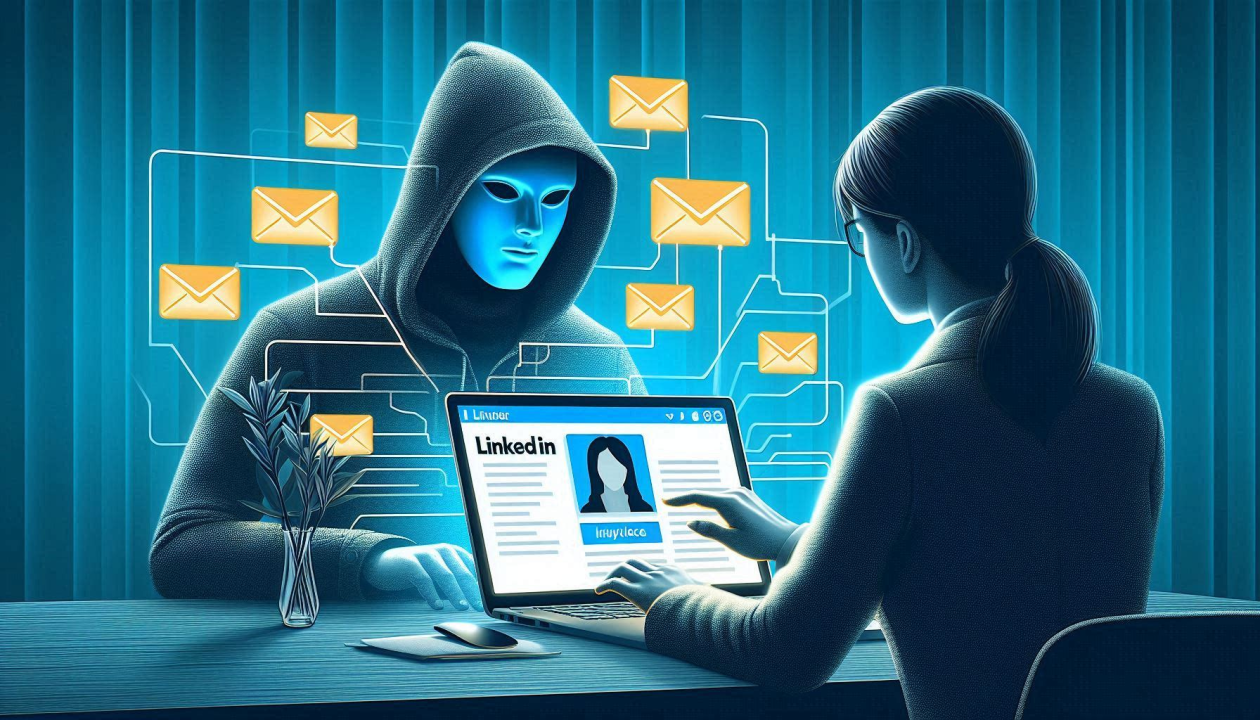Phishing Emails: The Silent Threat Lurking in Your Inbox


In today’s digital international world, communication by electronic mail is an essential part of our daily repetition. Whether for work or personal use, emails keep us connected, informed and organized. However, amidst the flood of valid messages lies a silent but dangerous risk – phishing emails. These misleading messages, designed to steal sensitive information, have become one of the most widespread forms of cybercrime.
Understanding Phishing Emails
Phishing emails are fraudulent messages that appear to be from honest sources, including banks, government groups, or famous businesses. Purpose? Trick recipients into divulging personal records that include passwords, credit card information, and social security numbers. These emails often contain malicious hyperlinks or attachments, especially fake websites that carefully imitate legitimate ones.
The fulfillment of phishing lies in its concealment. Cybercriminals use persuasive language, pushy demands, or even emotional manipulation to lower your protection. With one click, you can expose your sensitive information and allow attackers to gain access to accounts, steal identities, or compromise commercial enterprise networks.
How Phishing Emails Operate
Phishing attacks are available in many papers. Some common techniques include:
- Spoofing Domains: Hackers create emails that appear to come from legitimate domains. A moderate version in the area of the conversation (eg @g00gle.Com rather than @google.Com) is often not recorded.
- Urgency and fear tactics: Messages claiming your account is compromised or your price has failed regularly lead to immediate action without proper review.
- Link manipulation: Phishing emails often contain hyperlinks that redirect users to fake websites designed to collect personal statistics.
- Malicious attachments: Some emails come with supposedly innocent attachments that, when opened, install malware or ransomware on your tool.
- Impersonation: Attackers impersonate co-workers, managers or service providers to obtain sensitive facts through social engineering.
Real-World Impact of Phishing
The consequences of falling victim to phishing can be devastating. For individuals, this could mean tired bank accounts, stolen identities and damaged credit scores. For groups, phishing can lead to statistics disruption, financial loss and reputational damage.
In 2023, phishing attacks accounted for more than 36% of all record breaches worldwide. Large businesses, small organizations or even government institutions have not been spared, highlighting the large reach of this silent threat.
An amazing example happened when a major social media platform suffered a breach through a phishing attack targeting staff. Hackers gained the right to access the internal tools, which led to unauthorized tweets from excessive money owed. Now, this incident has not only caused financial losses, but also undermined public confidence in the protection of the platform.
How to Recognize Phishing Emails
Protecting yourself starts with awareness. Here are some pink flags to watch for:
- Generic greetings: Phishing emails often start with “Dear Customer” instead of addressing you through a call.
- Poor grammar and spelling: Legitimate companies maintain a professional verbal exchange. Bugs are a robust rip-off indicator.
- Unsolicited attachments or links: Beware of sudden emails that invite you to download files or click on links.
- Inconsistent email addresses: Compare the sender’s email with a legitimate domain. Look carefully for discrepancies.
- Requests for sensitive information: Reputable companies almost never ask for private information via email.
- Too good to be true: Emails promising extravagant rewards or lottery winnings are often phishing attempts.
Steps to Protect Yourself
- Sender Verification: Always double test email addresses and call the organization directly if you are unsure about the message.
- Hover over links: Before clicking, hover over the links to preview the URL. Avoid sites that don’t fit into the respectable area.
- Enable Multi-Factor Authentication (MFA): MFA adds another layer of security, making it more difficult for attackers to gain access.
- Update your software regularly: Make sure your running computer, browser and anti-virus software are up to date.
- Educate and train: Businesses must hold regular training to help staff become aware of phishing attempts.
- Use email filters: Advanced email filtering tools can help find and quarantine suspicious emails before they reach your inbox.
- Back up important data: Regular backups can mitigate the impact of ransomware attacks that could come from phishing emails
- Report phishing attempts: Notify your IT department or email company when you receive suspicious emails. Reporting helps improve phishing detection systems.
Business Implications of Phishing
For businesses, phishing represents an extreme chance to ensure the integrity of facts and operational continuity. In addition to economic losses, phishing incidents can lead to:
- Intellectual Property Theft: Sensitive company data and trade secrets and techniques are valuable targets.
- Loss of customer trust: A phishing breach can damage an organization’s reputation, resulting in misplacement of clients.
- Regulatory penalties: Failure to protect sensitive statistics can result in heavy fines under data security laws.
Many organizations are now investing heavily in cybersecurity frameworks to protect them from phishing. By integrating computerized threat detection, worker education, and incident response protocols, organizations can reduce their vulnerability to phishing attacks.
The Future of Phishing Attacks
As the generation progresses, so do the tactics used by cybercriminals. AI phishing emails have become extremely sophisticated, mimicking writing styles and adapting to individual targets. These developments underscore the importance of staying upfront with robust cybersecurity practices.
New threats include deep fake phishing, where attackers use AI-generated voices or movies to impersonate CEOs or overrated officials. This incredibly convincing form of phishing has already caused huge financial losses to many businesses.
What to do if you become a victim
If you notice you’ve come across a phishing scam, act fast:
